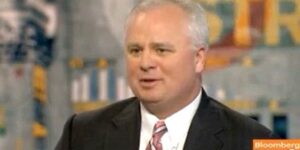
How HR Can Help Employees Who Live in Maternity Care Deserts
The U.S. maternal health crisis is getting worse, with far too many women struggling to find necessary maternity care. This problem is most severe in

The U.S. maternal health crisis is getting worse, with far too many women struggling to find necessary maternity care. This problem is most severe in

As organizations move beyond the pandemic, workforce development is changing in fundamental ways. For example, wellbeing has emerged as a top workforce priority, and this

Toxic cultures are like dark clouds looming over the world of work. Wherever they go, they wreak havoc with employee wellbeing. That’s not an overstatement.

These days, many facets of work life are changing. But here’s one trend you may not have been expecting to see: The return of the

While there’s still no clear sense for when the COVID-19 pandemic will end, one thing has come into sharp focus—the implementation of wellbeing programs. The

What is navigation assistance? And how will it help employers control healthcare spending in 2021? While 2020 has thrown human resources (HR) many curveballs, one

The impacts of COVID-19 and the measures governments and organizations are taking to contain it right now are unprecedented. The hourly breaking news headlines of

TalentCulture’s Meghan M. Biro reviews six employee wellness trends for 2020.

“All work and no play” may not make Jack a dull boy, but it certainly does him no health favors. A 2013 study by the

Companies are investing more resources in creative wellness programs. Why? The evidence is mounting that the physical and emotional well-being of workers is intrinsically tied

With the gig economy hot and salaried employees craving more flexibility, much of the workforce is settling into a telecommuting lifestyle. And companies are using

Are you planning your calendar for #SHRM18 in Chicago? I’m making my packing list, getting excited to see some of my favorite people in the

How are you feeling? When you close your eyes at night, do you feel the phantom buzzing of your phone? Are you tempted to check

Do you exercise every day? Improving my personal wellness is at the top of my resolution list for 2018. So far, I’d give myself a

The beginning of 2018 has brought with it record cold and extreme snowfall in many parts of the country, making some workers feel like they’ve

The mental calm of yoga may seem out of place in the bustling world of organizational leadership, but author Tarra Mitchell says yoga is just
Health and wellness extends far beyond preventing the spread of germs in the office during cold and flu season. It is a combination of keeping
Health and wellness extends far beyond preventing the spread of germs in the office during cold and flu season. It is a combination of keeping

New research indicates that employees tend to love their employers — but don’t feel it in return. What can we do about that? The #TChat crowd weighs in

How can employers win the hearts and minds of today’s workforce? The TalentCulture community takes a closer look — for better or worse.

Recent headlines suggested that workforce wellness has failed. But “Wellness 2.0” is rewriting that story. What’s new? Read more

Great workplace cultures recognize employees as “whole” people. Learn how to fully engage your workforce at our webinar with the President of Virgin Pulse

We’re excited to transform organizational cultures — hand-in-hand with a dynamic leader in workforce engagement! Learn more about our partnership…
Staying focused at work is a skill, but being mindful of the choices we make is also a decision. Sometimes, the technology that connects us also frees us to multitask. But how far can we push that without suffering downside consequences?
Advice from a work-life expert: Guidelines for managing your way through personal illness – and back to professional wholeness